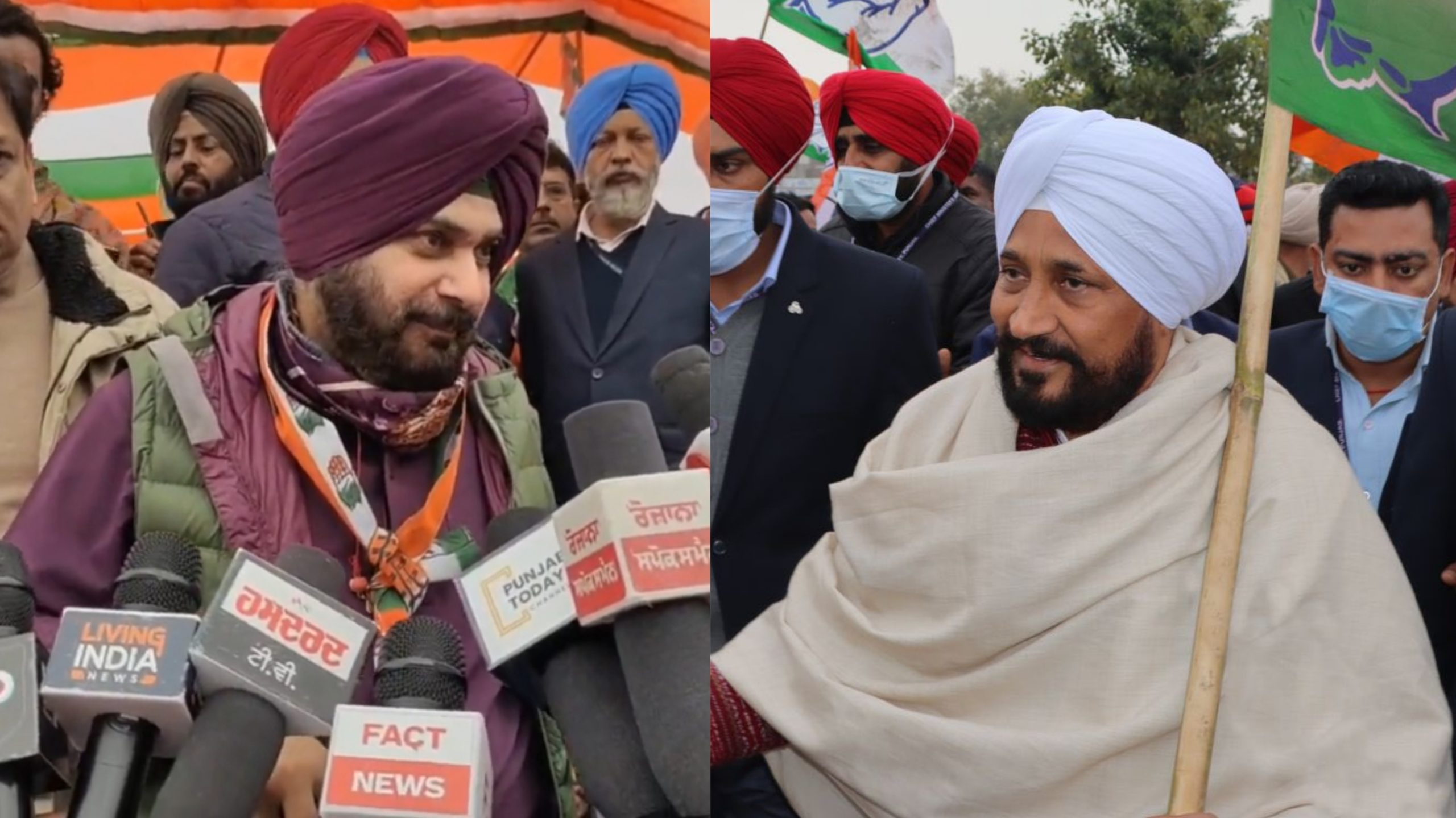


NEW DELHI/CHANDIGARH: Punjab, India’s most important border state, will be voting on February 20, 2022 to elect its new government. It’s witnessing a quadrangular contest with ruling Congress trying to retain power. Its main challenger Aam Aadmi Party (AAP), Shiromani Akali Dal (Badal), Bharatiya Janata Party led coalition of former Chief Minister Captain Amrinder Singh and breakaway faction of Akali Dal led by Sukhdev Singh Dhindsa are fighting a no-holds-barred election with allegations and counter-allegations flying thick and fast.
While AAP has declared Sangrur MP Bhagwant Singh Mann as its chief ministerial face, Congress has tied itself into knots after its former President Rahul Gandhi gave a hint about declaring the CM face. This announcement has come at a time when Punjab Congress president Navjot Singh Sidhu has made it known to his party top brass that the chief ministerial face should be named. Congress will lose its grandstanding of appointing Charanjit Singh Channi, a Dalit as chief minister, if it names someone else as its chief ministerial face.
Channi belongs to Ravidasia sect that forms 20.76 % of Dalit population along with Ramdasias. Giani Zail Singh, who was the President of India, was the first chief minister of Punjab who was a Dalit and belonged to Ramdasia sect. Founder of Bahujan Samaj Party (BSP) Kanshi Ram also belonged to the Ramdasia community. He was from the Malwa region and had won a Lok Sabha election from Hoshiyarpiur seat of Punjab.
There is another politically significant population of Mazhabi Sikhs who are 26.33 % of Punjab’s total population. There are Ad-dharmis and Valmikis whose population is at 10.17% and 8.6% respectively. Though Jat Sikhs have been dominating the Punjab politics, the population of various sects belonging to the scheduled castes and amounting to 66 % of Punjab’s population just cannot be wished away.
What has been helping the political parties especially Congress and Akalis who have ruled Punjab since independence is the lack of unity among the marginalised communities. The Dalits in Punjab are divided into 39 communities despite having a game changing population of 31.9%.
If we take the 2011 census into account, there were 30,95,324 people belonging to Scheduled Castes and divided into various sub-communities. The break up of this population stood at 10,17,192 as Ad-dharmis while 20,78,132 were bracketed as Ramdasias and Ravidasias. Significantly, 1,443,079 were Sikh Ramdasia while 6,29,157 were Hindu Ramdasias and Ravidasias. Since Channi comes from the Ravidasias, this community has come to the fore.
With Congress dithering on naming its chief ministerial face with the possibility of a Jat Sikh being named as its face, the poll dynamics in Punjab might change.
Political watchers say BJP has come into picture as it has been trying to convince the Hindu population of the state that the key to forming next government in Punjab lies with them. Traditionally, Hindus living in the urban and rural areas were considered as the ‘swing votes’ and parties that got their votes, ruled Punjab. BJP and its cadre have been trying hard to convince Hindu populations and Sikhs that voting for a nationalist party was in their interest as ‘Double Engine Government’ will fasten the growth of Punjab. Akali Dal is also campaigning hard to get the support of this community. Overall the caste cauldron of Punjab is on the boil and we will know it on March 14,2022 as to who has managed to get the mandate to rule the state for the next five years.